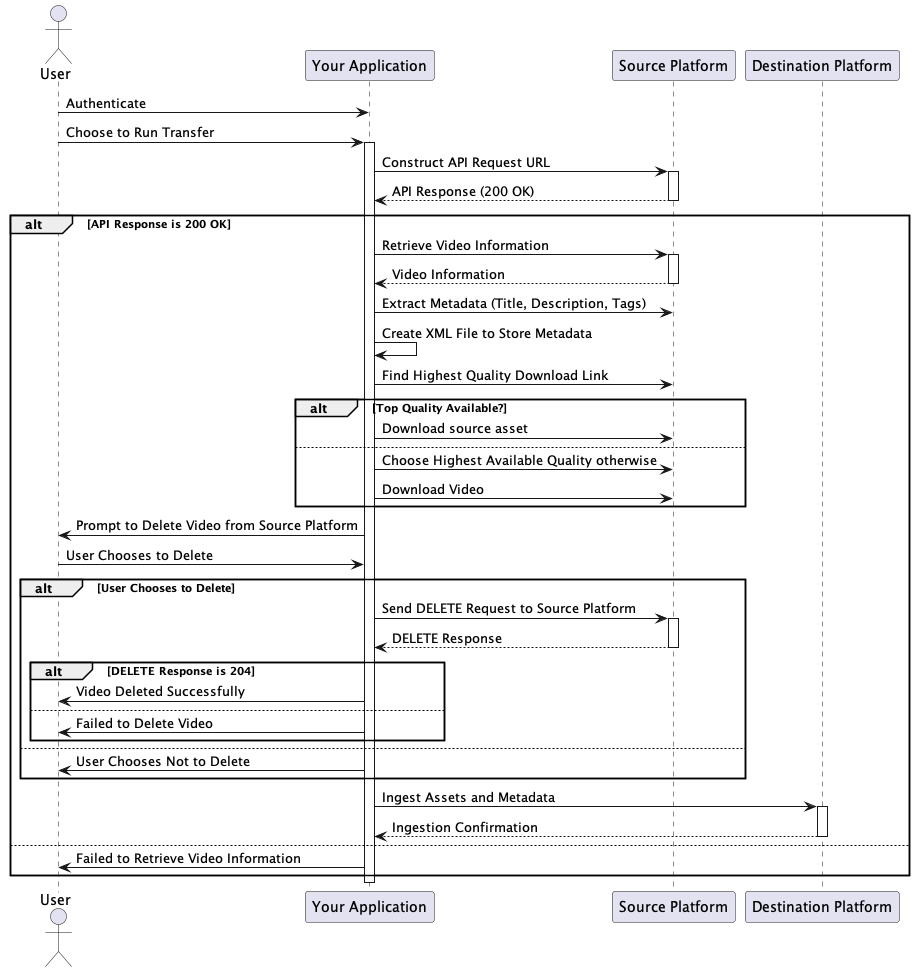Difference between revisions of "Workflow:OVP migration flow"
| Line 9: | Line 9: | ||
OVP migration flow Blueprint | OVP migration flow Blueprint | ||
| − | To initiate the transition from any given Source On-line Video Platform | + | To initiate the transition from any given Source On-line Video Platform to a Destination OVP, the first step involves retrieving video information from the OVP Source. You should be able to achieve this by making a GET request to the OVP Source's API authenticating against it, typically using an access token and video ID. This request should typically be directed to a generic API endpoint. |
| − | Upon receiving a response, you have the opportunity to extract valuable video metadata, including details like the title, description, and tags. Additionally, you can identify the download link for the highest quality version available. | + | Upon receiving a response, you should have the opportunity to extract valuable video metadata, including details like the title, description, and tags. Additionally, you can identify the download link for the highest quality version available. |
| − | This process should result in acquiring a video asset along with its associated metadata, often structured in XML format. Once these initial steps are executed, you | + | This process should result in acquiring a video asset along with its associated metadata, often structured in XML format. Once these initial steps are executed, you may offer the user the choice to remove the video entry from OVP Source. |
Following this, the natural progression leads into the OVP Destination ingest process, aligning with their API documentation and specifications. | Following this, the natural progression leads into the OVP Destination ingest process, aligning with their API documentation and specifications. | ||
Revision as of 18:38, 16 October 2023
OVP migration flow Blueprint
To initiate the transition from any given Source On-line Video Platform to a Destination OVP, the first step involves retrieving video information from the OVP Source. You should be able to achieve this by making a GET request to the OVP Source's API authenticating against it, typically using an access token and video ID. This request should typically be directed to a generic API endpoint.
Upon receiving a response, you should have the opportunity to extract valuable video metadata, including details like the title, description, and tags. Additionally, you can identify the download link for the highest quality version available.
This process should result in acquiring a video asset along with its associated metadata, often structured in XML format. Once these initial steps are executed, you may offer the user the choice to remove the video entry from OVP Source.
Following this, the natural progression leads into the OVP Destination ingest process, aligning with their API documentation and specifications.
